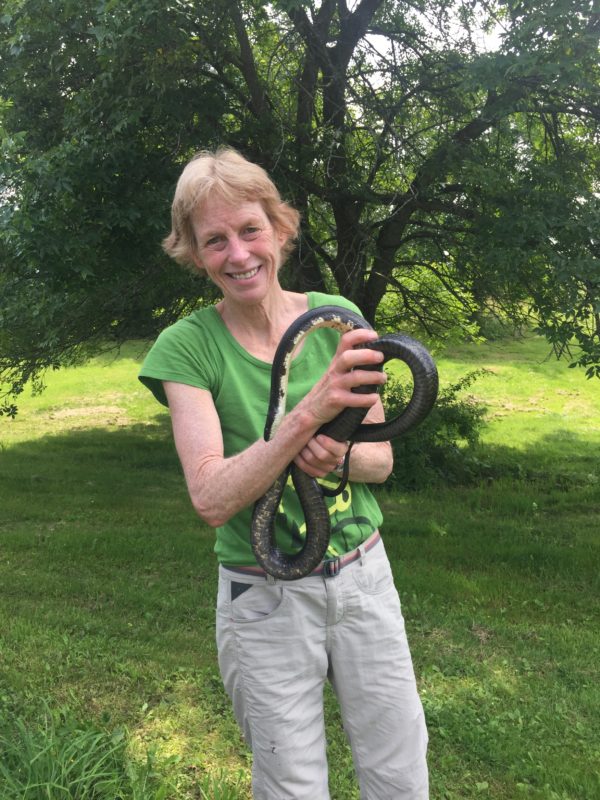
Cindy Sprague handles a ratsnake as part of a study in Addison County to learn more about the snakes and aid in conservation efforts. Photo courtesy of Cindy Sprague.
The Vermont Fish & Wildlife Department is cooperating in a three-year study of an isolated population of Eastern Ratsnakes, a species that is listed as ‘Threatened’ under the State’s endangered species law.
Researcher Cindy Sprague along with department staff are working with Veterinarian Scott Maclachlan to surgically implant radio transmitters in two ratsnakes. One ratsnake has already been captured and has had the tracking device implanted, with another capture targeted for the summer of 2018. The researchers hope that the snakes will lead the team back to their communal den site, helping to focus future land conservation efforts.
The project is being overseen by wildlife biologist Doug Blodgett from the Vermont Fish & Wildlife Department, as well as Jim Andrews, coordinator of the Vermont Reptile & Amphibian Atlas. “Ratsnakes, as their name implies, eat rats, mice, and other small mammals, and help to control rodent populations,” said Blodgett. Rodents cause millions of dollars damage to crops each year nationwide, and are the major carrier of over 60 diseases that are transmissible to humans including Lyme disease, according to the U.S. Department of Agriculture. “Some people fear snakes, but given the threats that unchecked rodents can pose, people are actually much safer with healthy snake populations around.”
According to Blodgett, this northern population of ratsnakes in Addison County is isolated from another Vermont population centered in Rutland County. He says that this study will provide important information for the conservation of this species.
Hydrogeologist Cindy Sprague of Huntington is the principal investigator on this project, and is currently conducting the field tracking portion of the study. She has been studying herpetology for several years and is a long-time volunteer with the Vermont Reptile & Amphibian Atlas. Sprague believes that ratsnakes, like all snake species, are too often misunderstood or vilified. “Ratsnakes are my favorite snake because of their large size and docile nature,” said Sprague. “They’re not venomous, eat plenty of rodents and are harmless to humans.”
Source: Press Release from Tom Rogers, Vermont Fish & Wildlife Department, Information and Outreach

Would Ms Sprague consider writing a bit about her current experiences? I think there would be a lot of interest. Perhaps she has a blog. Thanks! Norma in NH
Hello, I live near the watershed property in Bristol. I have seen many rat snakes over the years. Yesterday there was a dead rat snake on Hardscrabble rd. just north of Airport road. I recreate in the wareworks a lot and can tell you locations where I have seen them the most. Lower Piney Woods Road is an excellent location just west of the last culvert.